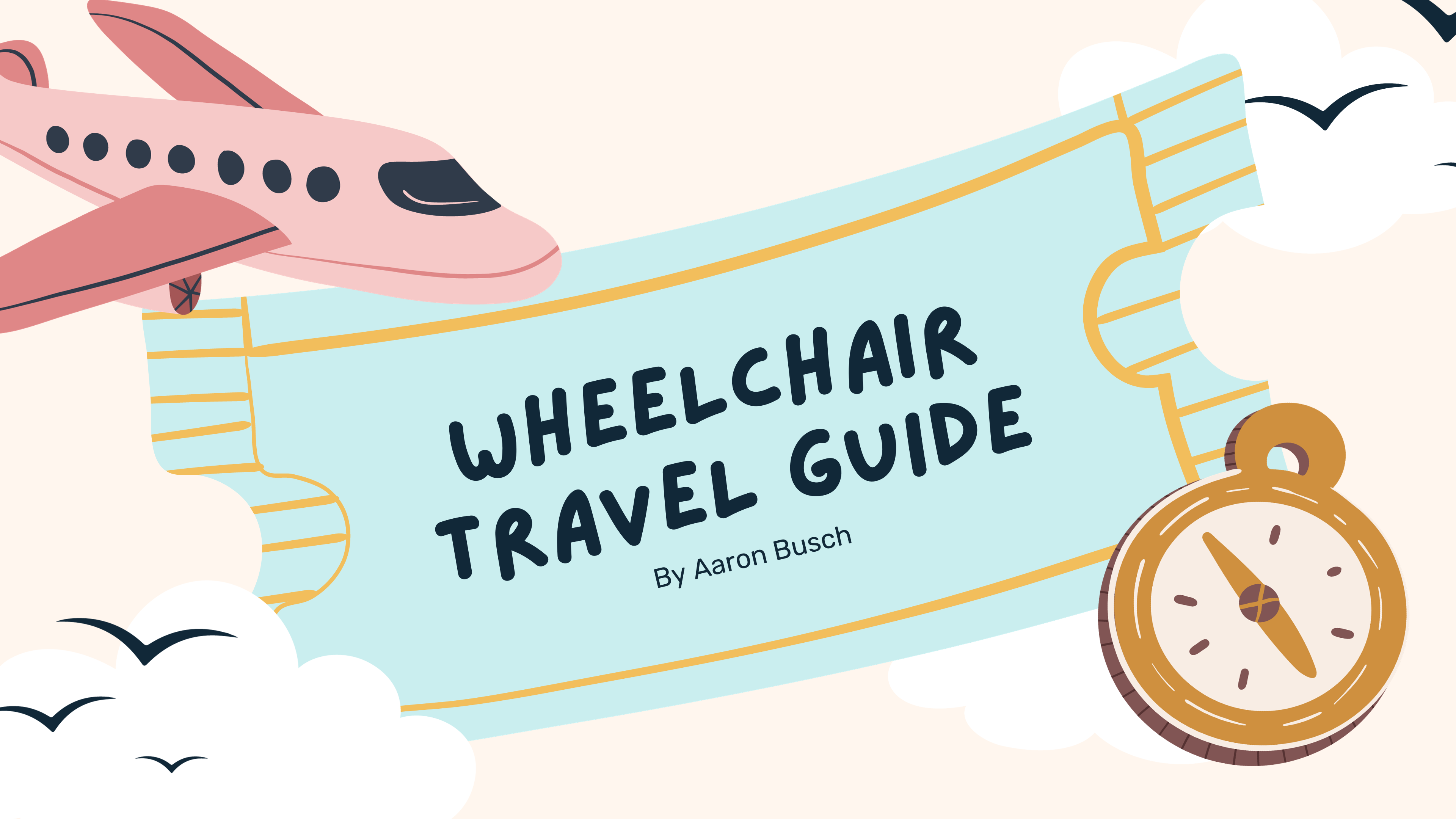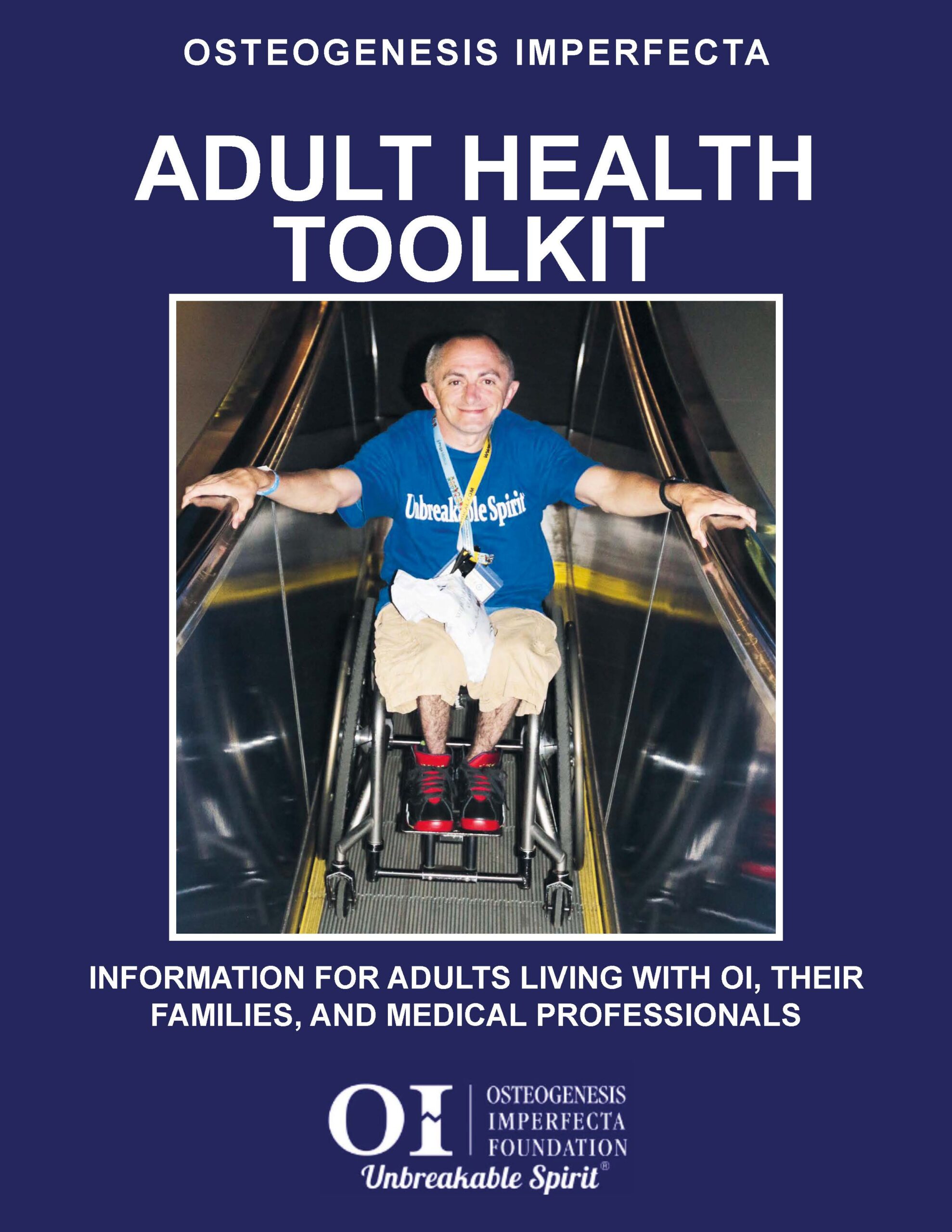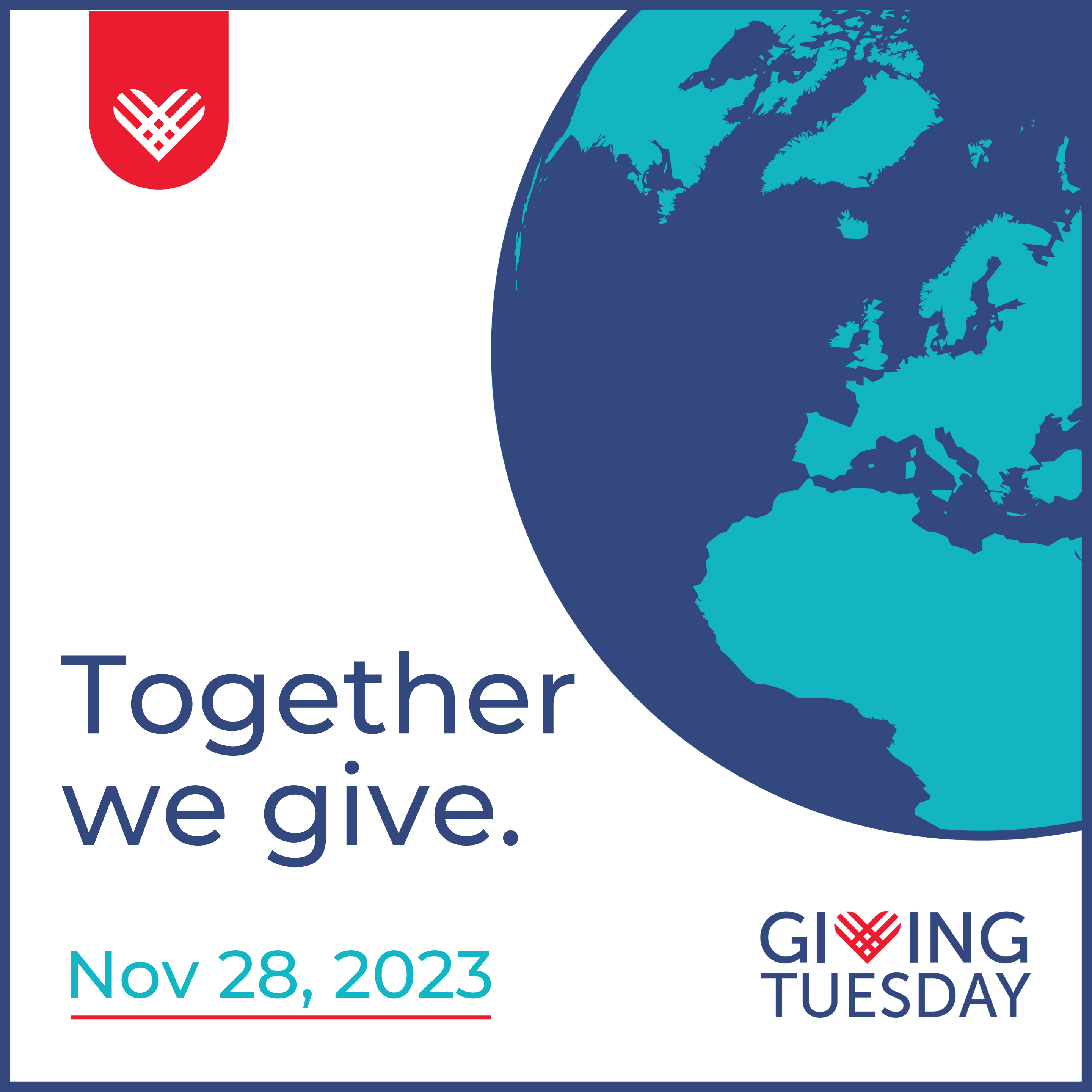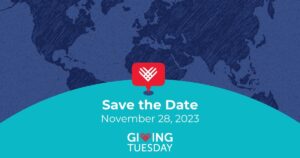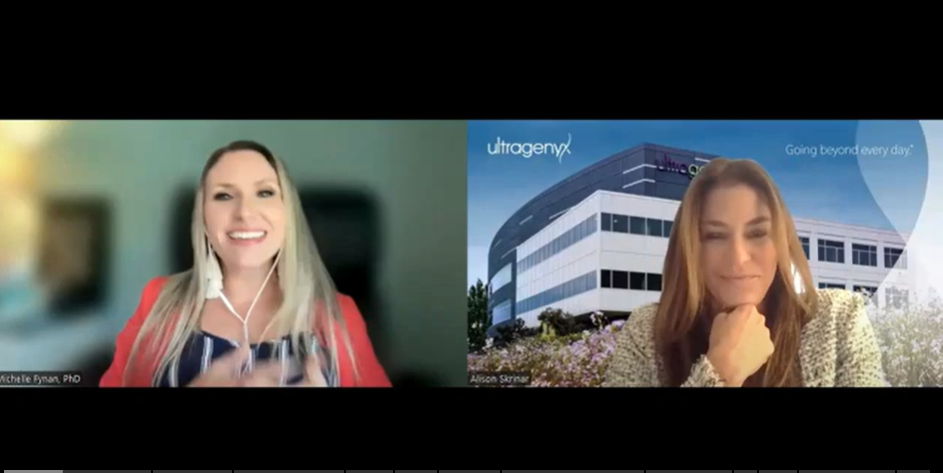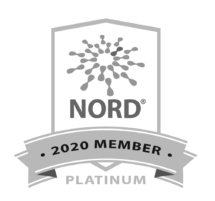Dear Friend,
As we near the end of another wonderful year, we are taking a moment to reflect on the generosity of individuals who have allowed the OI Foundation to continue providing programs and services that benefit all members of the OI community. We hope you will take a moment to read about some of our most exciting accomplishments over the past year as we strive to improve the quality of life for individuals living with OI through research, education, awareness, and mutual support. Please consider helping the OI Foundation continue our efforts to improve the quality of life for individuals with OI by making an end of year contribution using the enclosed envelope or visiting www.oif.org/donate. Thank you in advance for your support!
Eugene Washington PCORI Engagement Award
Under the direction of OIF Medical Advisory Council member, Dr. Laura Tosi, the OI Foundation continues to administer our Eugene Washington PCORI Engagement Award, through the Patient-Centered Outcomes Research Institute (PCORI), Preparing Adults with Osteogenesis Imperfecta to Engage in Research on Access and Quality of Care for Their Rare Disease (IDD). In the project’s research phase, surveys were sent out to both patient advocacy group leaders and pediatric clinic leaders, interviews were done with leaders of patient advocacy organizations and various medical professionals, and listening sessions were held with members of the OI community including patients, parents, and caregivers. Topics explored in the ventures of this phase included the healthcare needs of young adults with OI transitioning from pediatric to adult care, as well as identification of barriers and opportunities for accessing quality health care across the age span. These methods have helped us to identify major gaps in care transitions and adult care for individuals with OI.
Adult Transition/Somewhere to Go
In October 2023, the OI Foundation brought together rare disease advocates from across the country focused on the issue of transitioning from pediatric to adult care. Also addressed was the issue of finding quality care for adults with rare diseases. The Osteogenesis Imperfecta Foundation is leading this effort under the leadership of Dr. Laura Tosi in response to the OI community’s feedback that finding experts or providers with knowledge about OI is very difficult especially when transitioning from pediatric to adult care. The meeting developed action items and will engage those who attended in this issue over the next year.
Adult Health Toolkit
The Osteogenesis Imperfecta Foundation is pleased to announce the publication of the Adult Health Toolkit: Information for Adults Living with OI, Their Families, and Medical Professionals to help you navigate the many aspects of managing your health as an adult living with OI. This resource seeks to provide adult OI community members with tools to use in healthcare environments and everyday life. Through this toolkit and online resources, the OI Foundation provides the most up-to-date medically reviewed information possible.
Scientific Meeting
Each year, leading scientists and medical professionals attend the OI Foundation Scientific Meeting, a two-day event where attendees collaborate and share research. OIF Medical Advisory Council (MAC) members, researchers in the Brittle Bone Disorders Consortium (BBDC), and other notable researchers and clinicians are invited to attend. This year’s meeting, held on April 13-14, 2023, was chaired by Dr. Kenneth Kozloff (Professor of Orthopedic Surgery at the University of Michigan). The meeting featured over 30 presentations on a wide variety of topics including Energy Metabolism, Growth, OI Organizations, and Emerging Therapies. Following the meeting, OIF Medical Advisory Council member, Dr. Frank Rauch, recorded a video summarizing the key findings for members of the OI community which can be found on the OI Foundation’s website.
Rare Bone Disease Alliance
The Rare Bone Disease Alliance (RBDA), a program of the OI Foundation, brings together a coalition of seventeen (17) rare bone disease patient advocacy groups. The RBDA is committed to expanding education of rare and ultra-rare disorders and furthering research on the natural history, diagnosis, and treatment of these diseases. The RBDA unites researchers and early-stage investigators by hosting an annual Rare Bone Disease Working Group Meeting, monthly virtual TeleECHO sessions, an Early-Stage Investigator Meeting, and a Scientific Symposium. On March 9th, the RBDA hosted their third Virtual Scientific Symposium. In this series, intended for both researchers and clinicians, expert speakers explored the natural history and new developments in osteogenesis imperfecta. More than 100 attendees joined the live zoom presentation. The recording of the symposium can be found on the OI Foundation’s YouTube channel.
Michael Geisman Fellowship Grant
Giulia Montagna, PhD continued her work through 2023 as a Michael Geisman Fellow. The Michael Geisman Fellowship Grant program awards funding up to $50,000 per year, for two years, to postdoctoral trainees who are currently working on projects with clear relevance to Osteogenesis Imperfecta, or who have projects that will enable them to develop expertise in OI research. Giulia Montagna is a postdoctoral research fellow at Boston Children’s Hospital, affiliated with Harvard Medical School. She holds a bachelor’s degree in Biomolecular Biotechnology, a master’s degree in molecular biology and Genetics, and a Doctor of Philosophy in Health Technologies, Bioengineering, and Bioinformatics from the University of Pavia in Italy. Dr. Montagna joins Ellen Busschers and Jennifer Zieba who are currently in the middle of their Geisman Fellowship funding.
OIF Regional Conferences
This past year, the OIF hosted two Regional Conferences in Washington, DC and Phoenix, AZ. Nearly 100 OI community members and medical professionals attended each meeting to connect and discuss a range of OI related topics. Topics at the events included pain management, treatment options for adults and children, physical therapy, orthopedics and more. Coming in early 2024, the OIF will be hosting two more regional conferences in Nashville, Tennessee and Montreal, Quebec. Check out www.oif.org/conferences to keep up to date with upcoming OIF Conferences.
OI Clinic Outreach
In an ongoing effort to connect with medical professionals currently treating individuals with OI and to educate them on the OIF’s resources for clinics and their patients, the OIF held two OI Clinic and Bone Health Town Hall meetings chaired by OIF MAC member, Dr. Laura Tosi in June and November 2023. During the November meeting, former OIF Board of Directors member, Tracy Mulroy presented the Adult Health Toolkit to those in attendance. These meetings was a unique opportunity for medical professionals who treat patients with OI and those interested in bone health to connect with each other, stay up to date on OI care topics, and learn about OIF resources. The OIF also sends a quarterly electronic newsletter specifically to this group, which includes important announcements about meetings and resources.
OIF Information Center
This past year, OIF staff responded to more than 50 direct inquiries per month regarding medically verified information. Additionally, an average of 6,000 people used the OIF website each month. Topics ranged from medical issues such as genetics, diagnosis, and treatments to daily living strategies such as school participation and employment. The OIF has developed the Navigating a New Diagnosis: A Tool Kit for Parents and Medical Professionals and the OI Adult Health Toolkit. Educational materials are available in print and electronically through the OIF website.
Awareness Week
Each year, during National OI Awareness Week, OI community members request state proclamations, host events, tell their story, and share social media posts to raise OI awareness. This year, supporters used graphics and language from the OIF’s Awareness Week Social Media Toolkit to raise OI awareness on social media. During the week of May 6-13, OIF social media posts reached nearly 100,000 people, and 25 OI community members created National OI Awareness Week Facebook Fundraisers. In addition, many individuals purchased OIF Unbreakable Spirit® apparel to support the OIF and raise awareness. The OI Foundation also hosted a “Chat with the OIF” session with OIF CEO Tracy Hart, Board of Directors President, Ted Trahan, and staff members virtually where community members were able to ask questions and learn more about OIF resources.
OI Support Groups
The OIF Regional Support Group Program will be re-launching in early 2024. The Regional Support Groups are divided into five Regional Groups (Northeast, Southeast, Midwest, Southwest, and West). The groups aim to connect and foster a sense of community among OI community members in a specific region of the United States and to provide national and local resources. The goal of the OIF Support Group Program is to provide a space for sharing, educating, and socializing. This fall, OIF Staff interviewed interested members of the OI Community and selected Regional Support Group Leaders to serve as a contact person for families and individuals looking to connect with the OI community and OIF.
Jeanie Coleman Impact Grants
In partnership with the Children’s Brittle Bone Foundation, the Jeanie Coleman Impact Grant Program was designed to provide funding for items that will significantly improve the quality of life for a person who has OI and limited financial resources. In 2023, the OIF was able to fund $144,550 worth of items and services for 10 families. The 2023 grants covered a range of items and services including: physical therapy assistance, med sleds, and wheelchair accessible vehicles.
Edward D. Cranston College Scholarship
This scholarship is for students with osteogenesis imperfecta who are applying to or have been admitted to a college or university. Applicants must articulate a need for scholarship assistance to meet their academic goals, be committed to full-time college enrollment and show proof of enrollment in college to receive the funds. The OI Foundation is excited to announce the first-year recipients of the Edward D. Cranston College Scholarship: Eden Nadler and Ethan Yamashita! Eden and Ethan were selected from nearly 20 applicants by a committee of OI Foundation Board of Directors members and OI community members. We are proud to support this year’s recipients as they move forward in their education!
As you can see, your support plays a vital role in what we do, and we hope we can count on your continued generosity. With your help, we hope to continue to improve the quality of life for individuals living with OI through research, education, awareness, and mutual support.
Please consider making a gift of $50, $100 or more to the OI Foundation using the enclosed envelope, or online at www.oif.org/donate.
Thank you, as always, for your continued support.
Tracy Hart
Chief Executive Officer
Osteogenesis Imperfecta Foundation
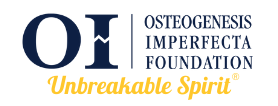




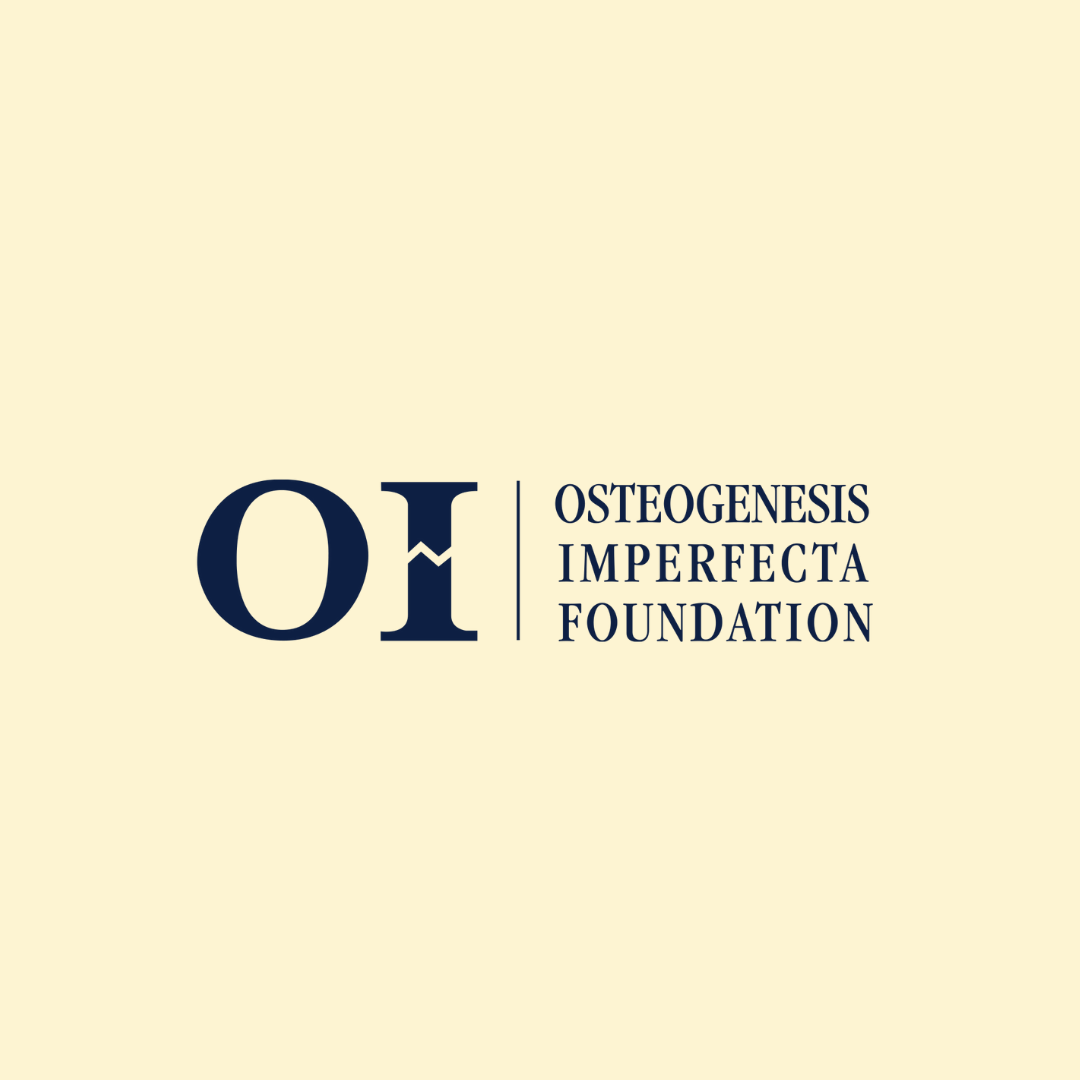
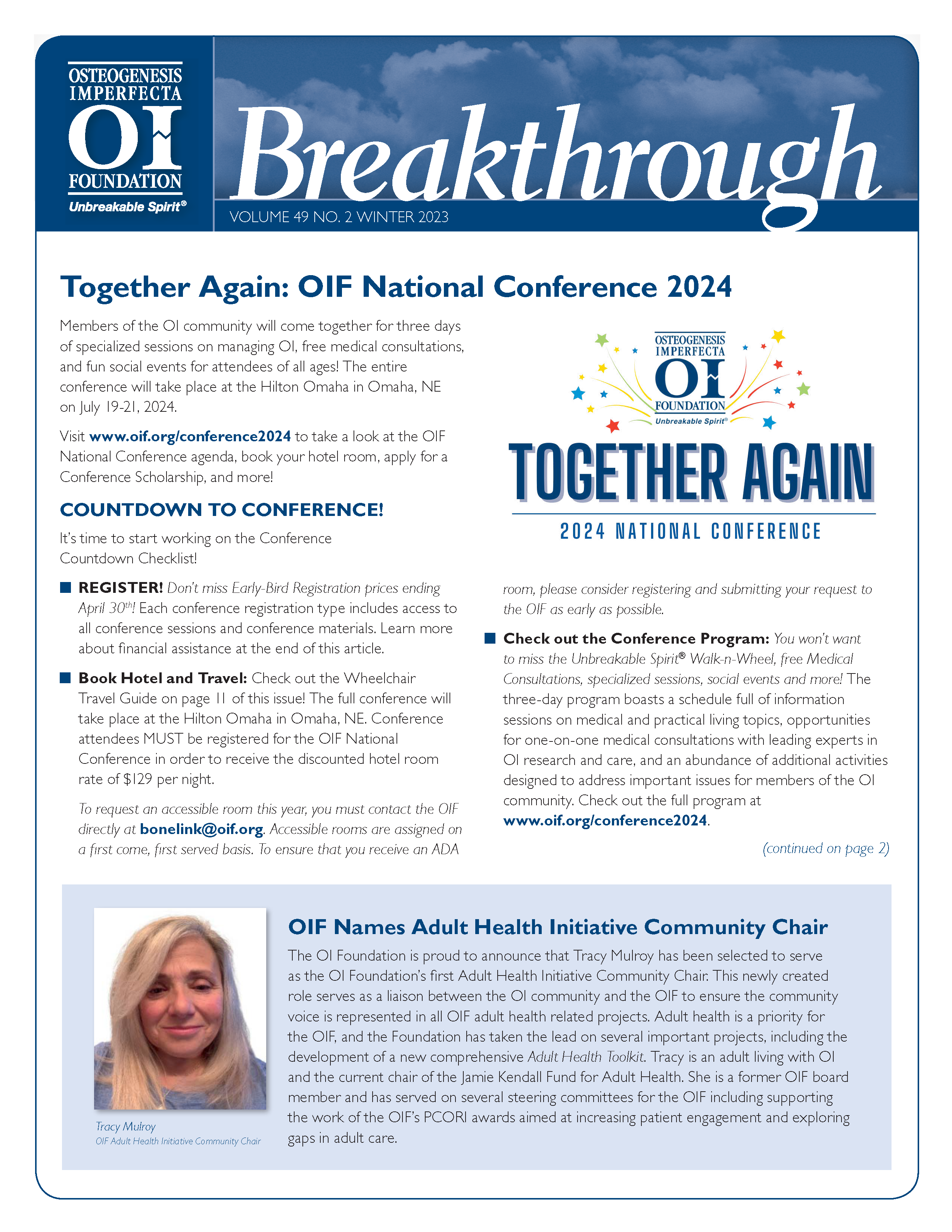
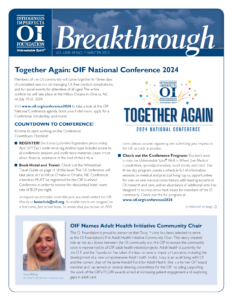 Have you read the latest issue of the OIF’s Breakthrough Newsletter?
Have you read the latest issue of the OIF’s Breakthrough Newsletter?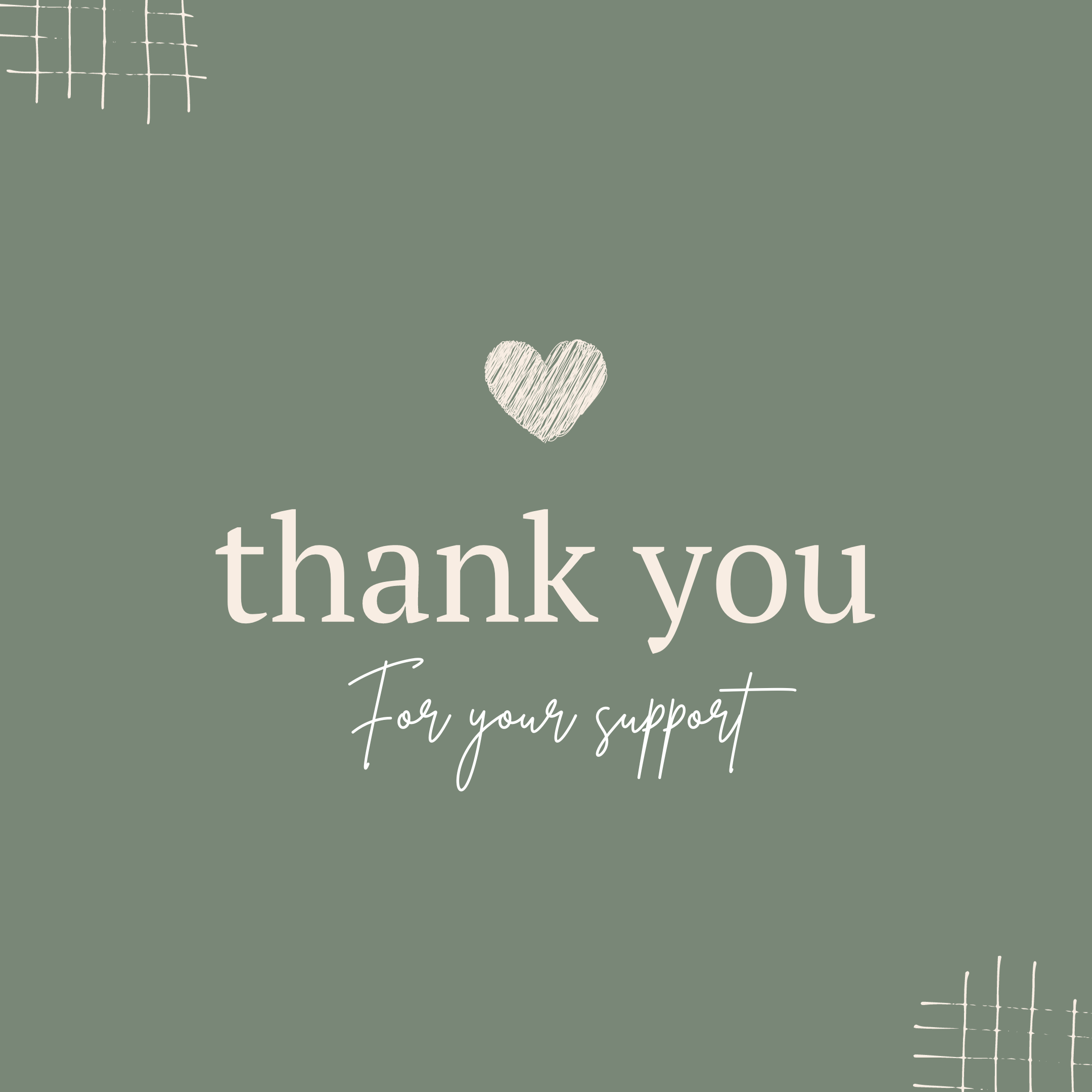
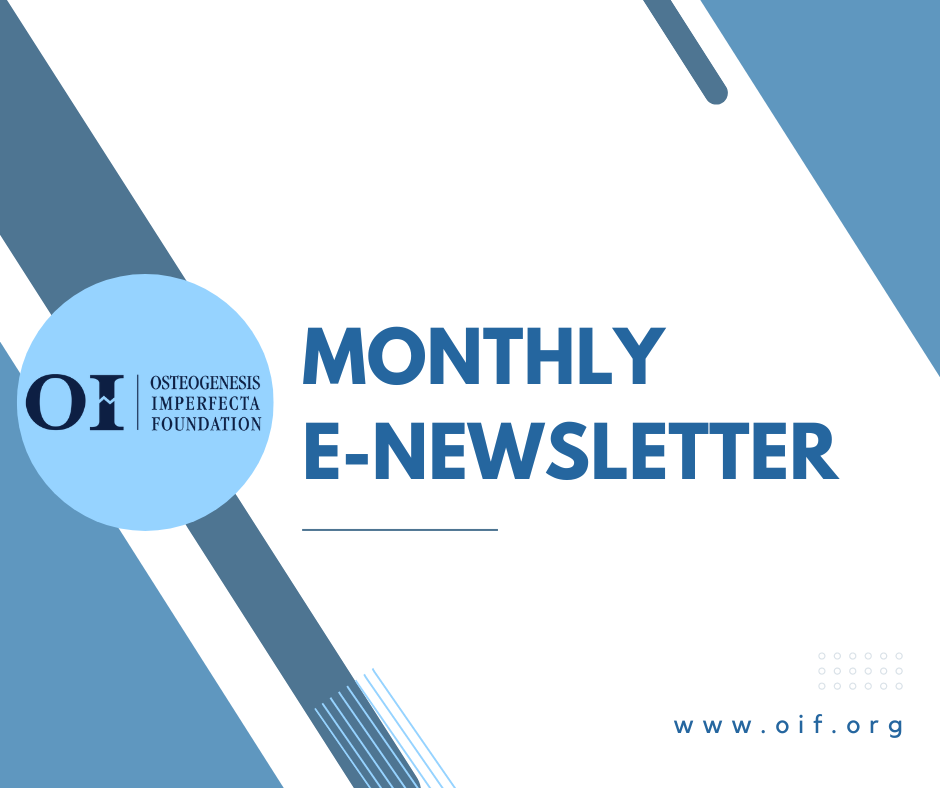
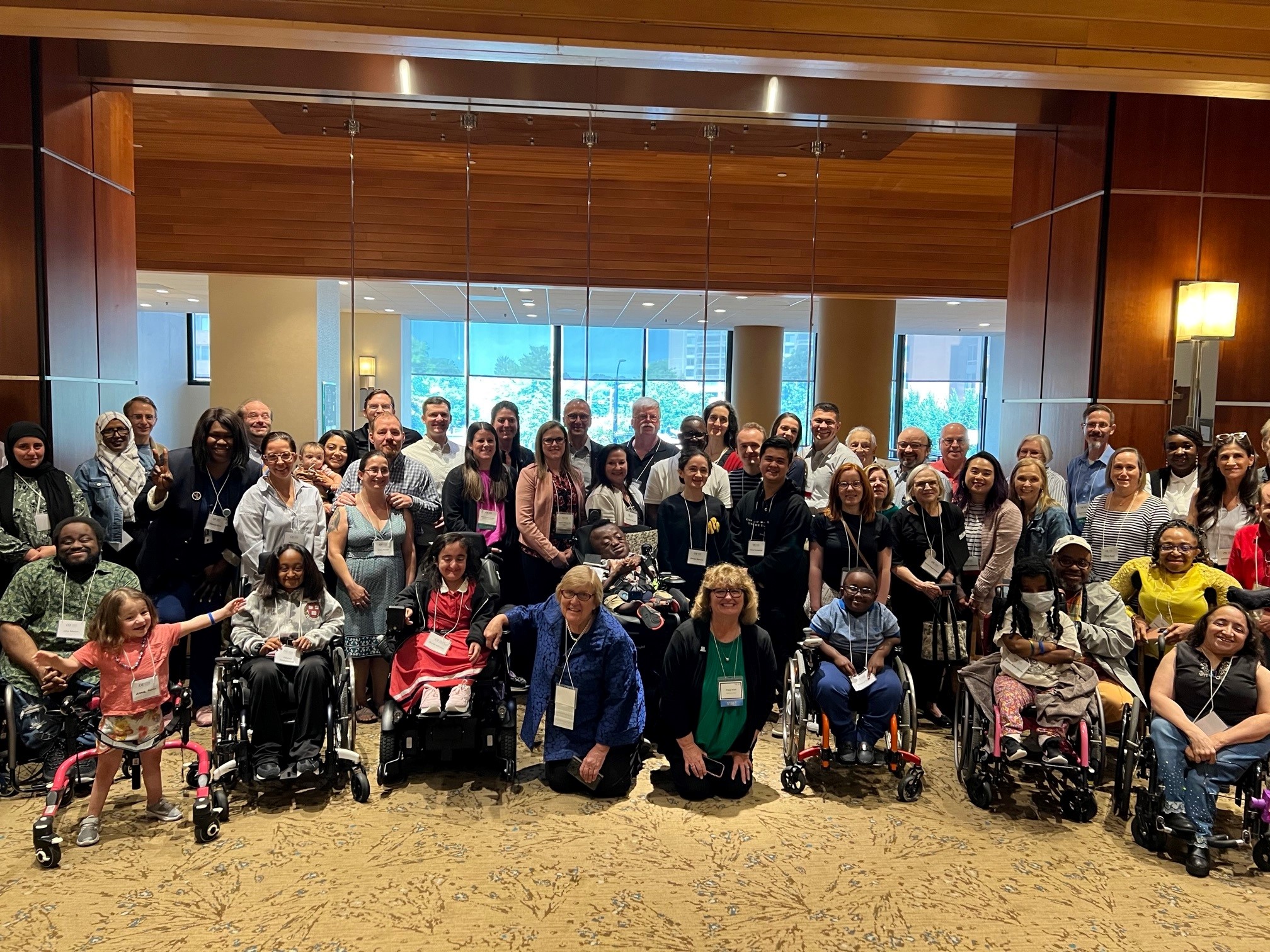
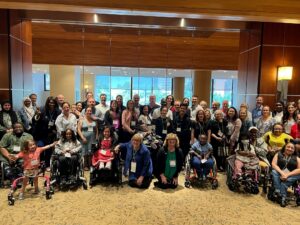 The OIF continues to help accelerate OI research with industry partners and research organizations like the National Institutes of Health and the Rare Diseases Clinical Research Network. More and more we are seeing how important it is to hear the voice of the OI community to help advance research and enhance programming. Through awards from the Patient Centered Outcomes Research Institute, the OI Foundation has been conducting a series of research studies to determine what issues are most impactful to the OI community. The results of these studies appear in the Research section of the OIF website.
The OIF continues to help accelerate OI research with industry partners and research organizations like the National Institutes of Health and the Rare Diseases Clinical Research Network. More and more we are seeing how important it is to hear the voice of the OI community to help advance research and enhance programming. Through awards from the Patient Centered Outcomes Research Institute, the OI Foundation has been conducting a series of research studies to determine what issues are most impactful to the OI community. The results of these studies appear in the Research section of the OIF website.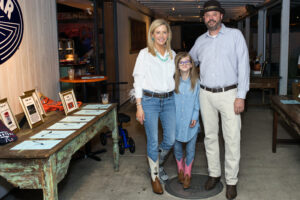 Awareness
Awareness